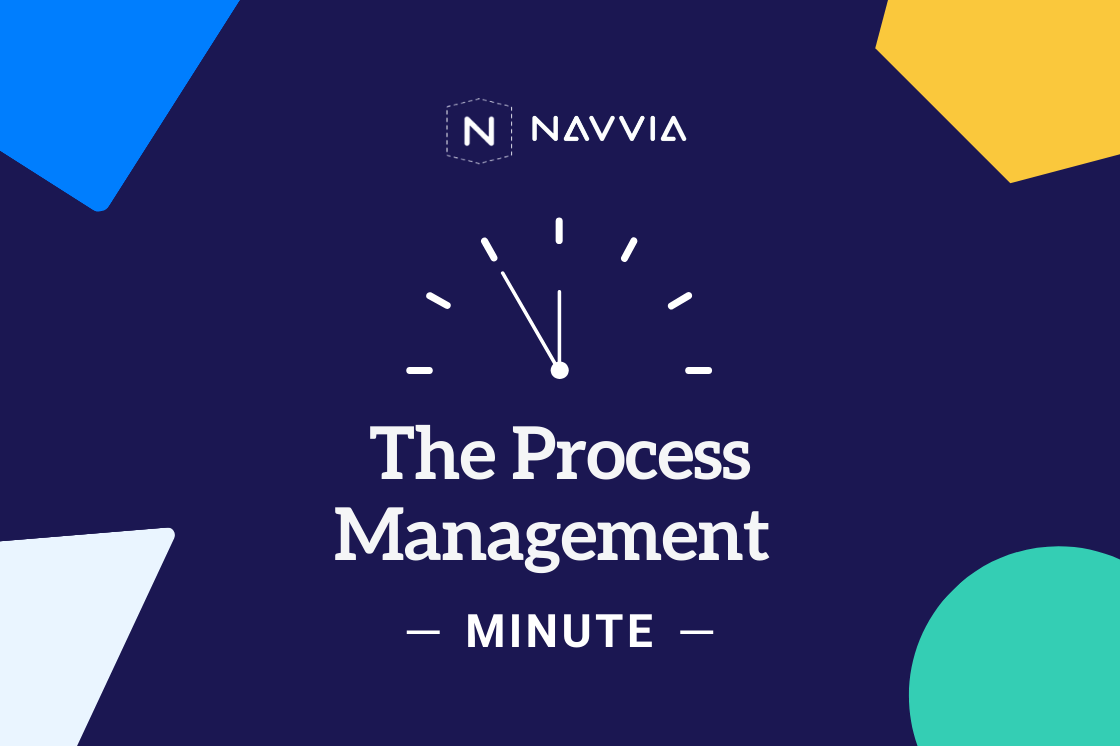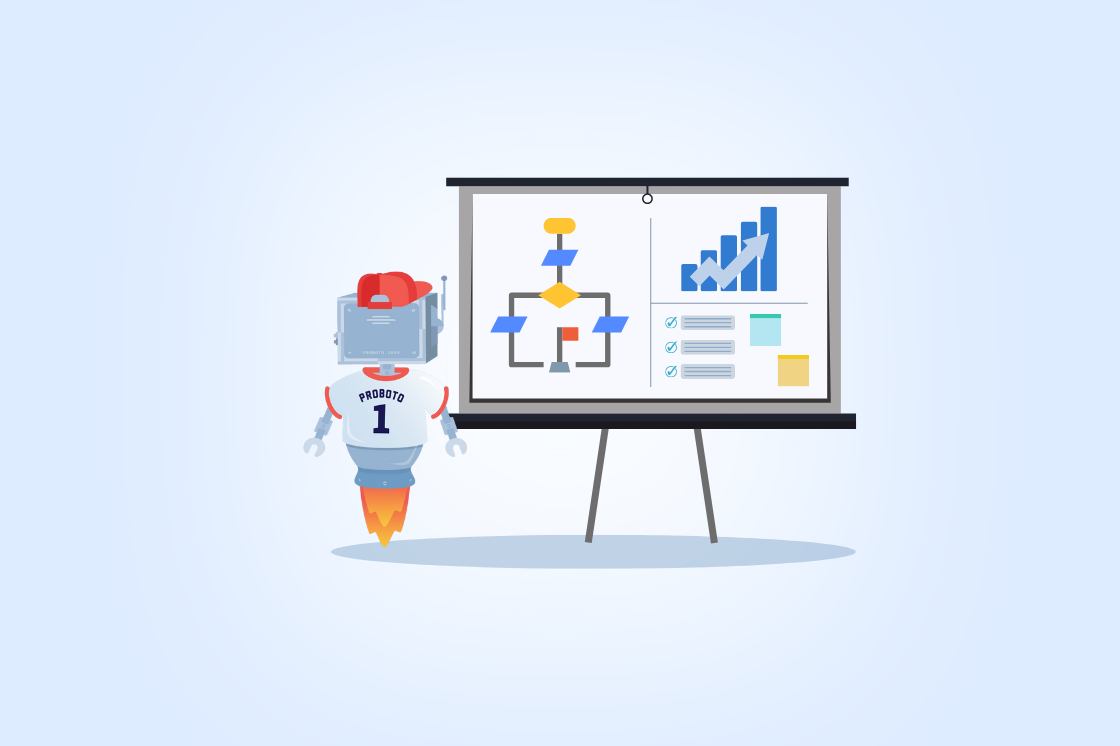Process Documentation: A Complete Guide
Creating robust process documentation is essential to any organization looking to retain knowledge, streamline operations and improve productivity. This article covers the why and how of process documentation.
In this article, we will cover:
- Why do we document processes
- How to document business processes
- Process documentation template
- Process documentation tools
Why do we document processes?
There are three fundamental reasons why you should document your processes.
- Communicate the “as is” business process
- As a starting point for process improvement
- As a blueprint for business process automation
As is process
An "As Is process" is just another way of saying your current process.
If you want your organization to achieve its goals, you need all employees pulling in the same direction.
Having comprehensive process documentation is a way to get everyone on the same page.
Process documentation acts as a job-aid for existing employees, a training guide for new employees, and a reference point for process governance and oversight.
Process Improvement
Continuous Process Improvement is essential in removing the inefficiencies and waste in your processes, improving employees’ productivity, and aligning your processes to new business objectives.
Learn how a SIPOC diagram can help drive Process Improvement
Digital Transformation is also one of the highest priorities for many organizations. It is a way of improving business operations through the application of digital technologies.
Process Improvement or Digital Transformation in an organization is very difficult unless you have a clear understanding of your “As Is” processes (what you are doing today) and your “To Be” processes (where you plan to go).
Learn more on how Business Process Management drives Digital Transformation.
Process Automation
I like to say that “a well-documented process is a blueprint for business process automation.”
Let me put it this way; would you build a skyscraper without a set of blueprints? Then how can you automate a process unless it’s been clearly defined?
A well-documented process includes all the data and tool requirements needed to drive automation.
The process documentation becomes the “user story” that guides developers in automating the process while establishing the acceptance criteria by which the business can validate a successful implementation.
Having well-documented processes and comprehensive technical requirements will accelerate Digital Transformation by minimizing waste and re-work. A lack of process documentation and technical requirements is one of the key reasons Why Digital Transformations Fail.
Business process documentation best practices
When it comes to creating process documentation, there are certain best practices that should be followed to ensure maximum effectiveness. Firstly, it's important to understand why you're documenting processes in the first place - whether it's to communicate the current process, improve it, or lay the groundwork for automation.
Once you know your purpose, you can begin to document the process itself, involving knowledgeable stakeholders in workshops to ensure a comprehensive and accurate capture of all essential elements. It's also crucial to use a comprehensive process documentation template that tells the complete story of the process and can be repurposed for various audiences.
Finally, choosing the right process documentation tools can make a huge difference in the efficiency and effectiveness of the process. The Navvia Process Designer is a cloud-based option that offers powerful yet affordable capabilities, including process maturity assessments, automation requirements capture, and automatic documentation generation.
By following these business process documentation best practices, organizations can achieve greater productivity, efficiency, and alignment towards their goals.
Gain valuable insights on how to enhance your process design and documentation by watching our informative webinar: Best Practices in Process Design and Documentation.
You will learn:
- Techniques to engage your stakeholders effectively.
- The critical elements of a process that you must capture.
- The relationship between process design and automation.
- How to govern and improve your processes for optimal results.
How to document a process
Comprehensive process documentation ensures you have captured the complete end-to-end process. The business process documentation format can vary from organization to organization, but your documentation process should include some combination of the following:
- Process Description: This is a high-level overview of the process providing context to the rest of the process documentation.
- Process Goals and Objectives: Goals and objectives play a crucial role in the context of a process. They provide a clear understanding of what needs to be accomplished and how to measure success. Goals define the overall purpose of the process, while objectives outline specific, measurable targets that need to be achieved to reach that purpose. By incorporating goals and objectives into process documentation, organizations can ensure that all stakeholders are aligned towards achieving the same end result.
- Process Roles and Responsibilities: One critical element of process documentation is the inclusion of process roles and responsibilities. Having this information in the documentation ensures that all employees understand their roles and responsibilities in the process, leading to better alignment and collaboration. One way of concisely presenting rles and responsibilities is through a RACI Chart. Learn how to create a RACI chart.
- Supporting Systems: In todays world virtually all processes are supported through some form of workflow automation platform. When documenting a process its essential to list the systems that play a role in process execution.
- Process Maps: Process maps are an essential component of process documentation. They provide a visual representation of the process and help to identify inefficiencies and areas for improvement. Process maps are also helpful for communicating the process to stakeholders and ensuring that everyone has a clear understanding of the process flow. By including process maps in your documentation, you can streamline operations, improve productivity, and align your processes with your organizational goals.
- Process Activity and Task Details: While process maps provide a visual representation, process activity and task details provide the narrative for the process. This includes description of each task, roles and responsibilities for the task, process inputs, process outputs, and work instructions.
- Process Governance: Process governance is an essential aspect of ensuring that policies, controls, and metrics are in place to guide and oversee business processes. Process controls are methods to measure compliance to industry or regulatory standards. Process metrics are used to track and measure the performance of organizational processes over time against established goals. Process policies are a set of guidelines, rules, and procedures that organizations develop to ensure that their processes are executed consistently, efficiently, and effectively across the enterprise.
- Automation Requirements: Automation requirements, including user stories, functional requirements, and technical specifications, are crucial for driving process automation. Our recommendation is to align them with process maps using techniques such as user story mapping.
- Links to external documentation: To ensure that process documentation is comprehensive and effective, it's important to link to external documents that provide additional context and information. These documents could include links to process training, detailed procedures or knowledge articles related to the process.
- Glossary of Process Terms and Definitions: this is a collection of definitions of words and phrases that are commonly used in the context of organizational processes. It provides a standardized language that ensures everyone involved in a process understands the meaning of the terms used, reducing the potential for miscommunication and misunderstandings. Some common process terms and definitions include:
- Process - A set of activities designed to achieve a specific goal or objective.
- Workflow - The sequence of steps involved in executing a process.
- Standard Operating Procedure (SOP) - A document that outlines the steps involved in executing a process.
- Key Performance Indicator (KPI) - A measurable value used to track the performance of a process against established goals.
Want to learn more about documenting processes? Check out these resources:
What are process levels, and why are they important?Process Documentation Template
There is much more to a process document than a simple flowchart. Yes, a flowchart is an important part, but it doesn’t tell the whole story.
Comprehensive process documentation needs to tell a complete story. It’s the end-to-end narrative that captures all the essential elements of the process.
It also should be modular so that you can repurpose it for different audiences (without having to re-write the whole thing). What do I mean by that?
Each section should stand on its own, for use in other related documents, such as:
- An Executive Summary
- As a job-aid for the users of the process
- An onboarding document for new employees
- A reference guide for auditors, aid for process
- User stories for process automation specialists
FREE Process Documentation Template FREE
The following are some business process documents that you are free to access!
Here is the table of contents from an ITIL-based Change Management process aligned to a Servicenow implementation. I’ve provided two views, one for a Complete Process Document and an Executive Summary.
Want to see a bit more detail? Download this ITSM process flow for an ITSM-based Access Management process.
Did you know that the Navvia Process Designer can automatically create tailored process guides for you? Click here to learn more.
Process Documentation Tools
There are a variety of tools for process documentation.
When first designing a process flow, many like to use a whiteboard and yellow stickies.
When documenting a process, many folks turn to Microsoft Visio and Word products.
Some organizations use complicated and expensive BPMN tools.
The problem with these tools is that they are either labor-intensive or overly complex to learn and use.
We recommend you take a look at the cloud-based Navvia Process Designer.
Navvia is an inexpensive yet powerful tool to design, document, and share your processes. With Navvia, you can:
- Perform process maturity assessments
- Design and document processes
- Capture technical requirements for automation
- Automatically generate process documentation
- Perform process governance
- Get started with ITIL, Servicenow, and COBIT templates


